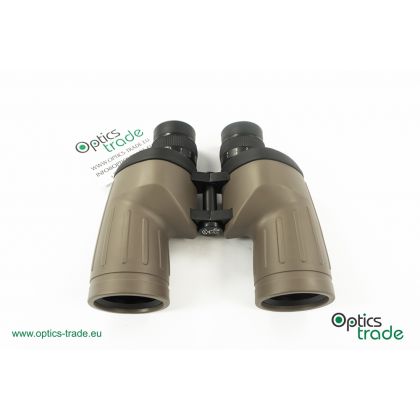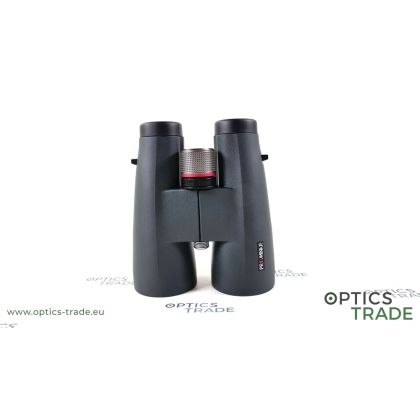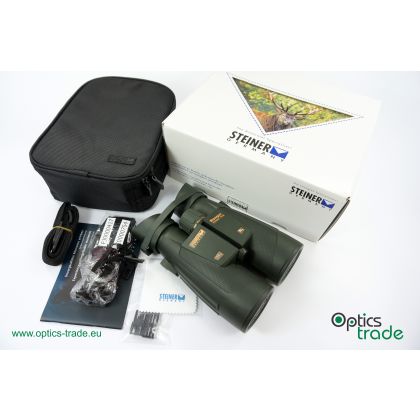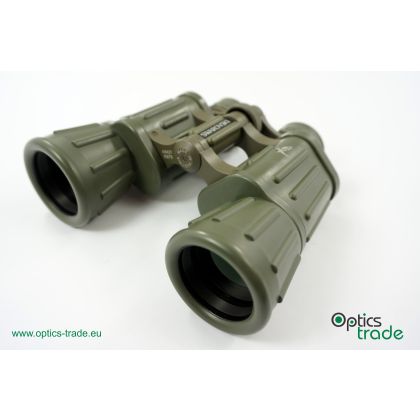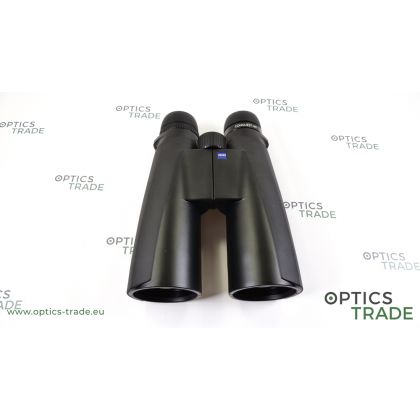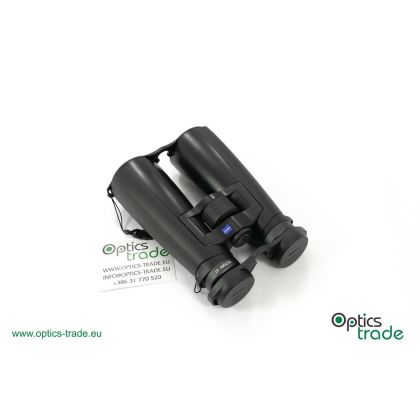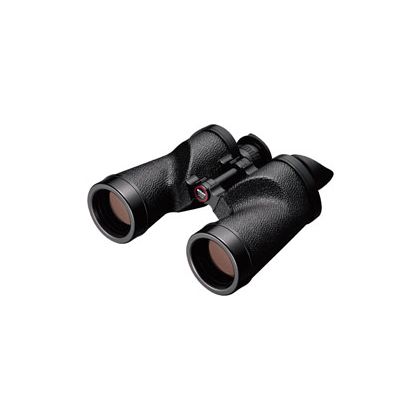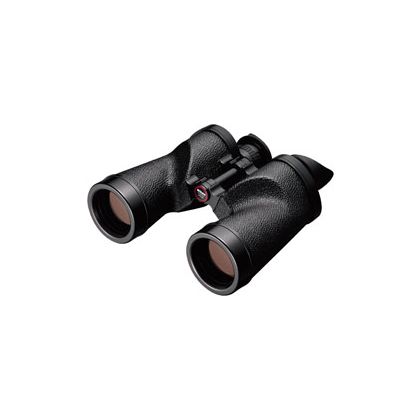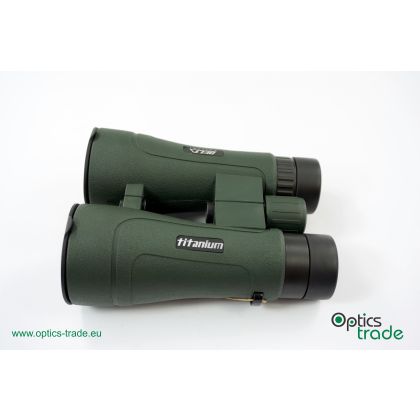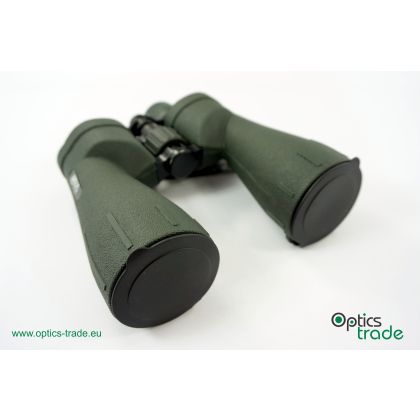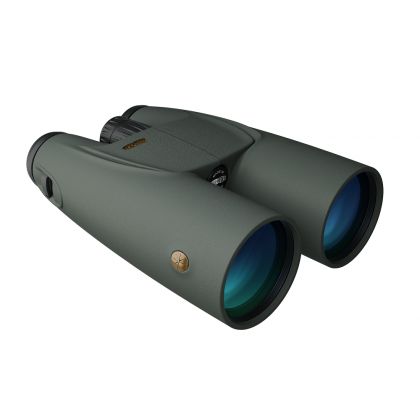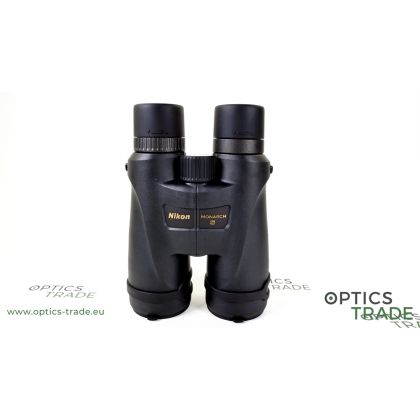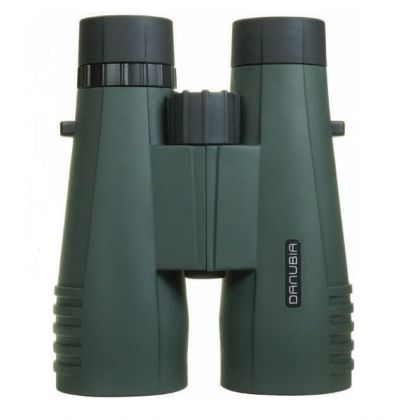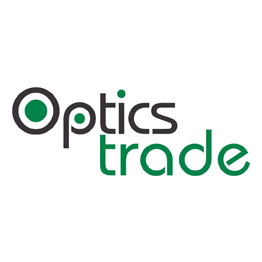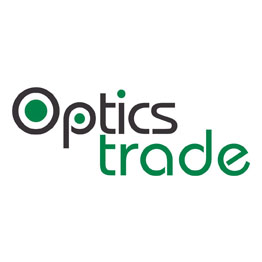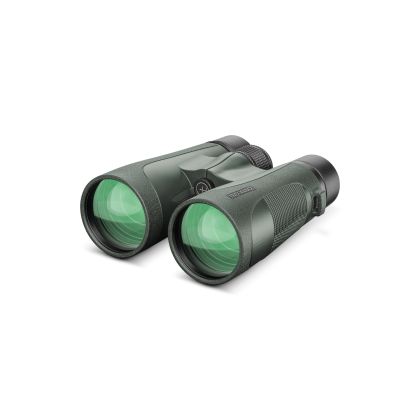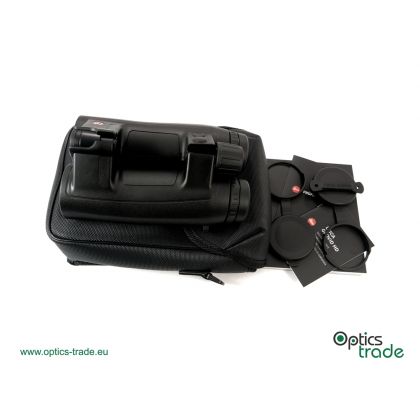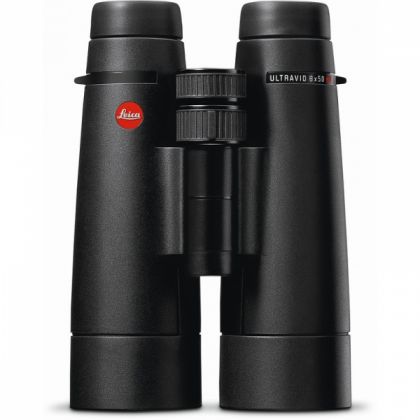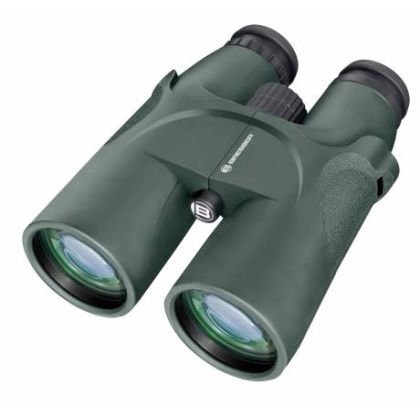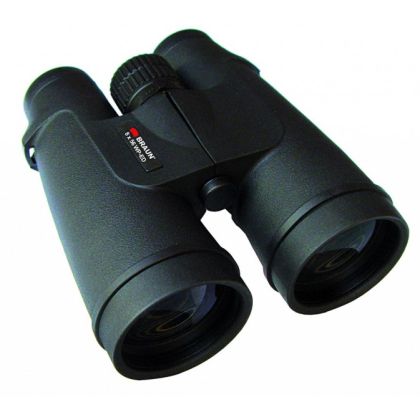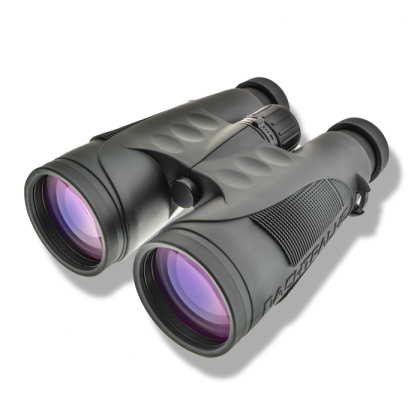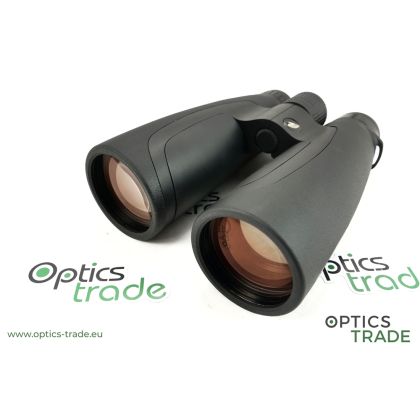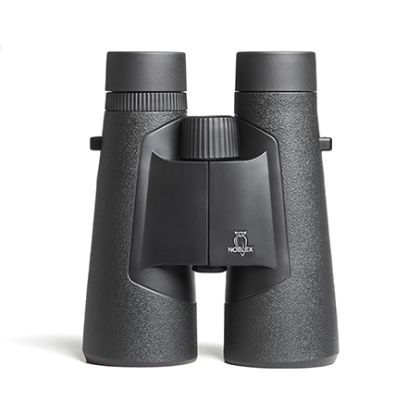Mounts
Low Light Binoculars
General properties
Hunting in low-light situations at dusk and dawn or even at night is especially popular in Europe and many binocular manufacturers are producing binoculars that are especially good in such situations.
Low light binoculars offer exit pupils with a diameter of approximately 7mm, which is the maximum value the human eye can use.
Low Light binoculars also offer very high light transmission rates and are built to gain as much light as possible.
Common features:
-
High light transmission rate
-
Porro prism or Abbe Koenig prism system
-
Individual focusing for each eye (common in some low-light binoculars)
-
Exit pupil in diameter of at least 6mm
Importance of light transmission rate
The light transmission rate is of paramount importance in Low Light Binoculars because when using binoculars in low light conditions it is very important that all the light captured by the objective lens comes to the eye.
The light transmission rate depends on:
- The quality of the glass,
- The quality of the coatings on the lenses,
- The prism type (Abbe Koenig and Porro are better than the Schmidt-Pechan, where up to 8% light is lost when compared with the first two).
Objective lens and magnification
Objective lens
It is very important that Low Light binoculars have a very large input lens (most often 50 or 56 mm ) in order to capture as much light as possible.
Magnification
By increasing the magnification, the exit pupil gets narrowed, so we see a less bright picture with binoculars with higher magnification. For this reason, the most common magnifications are 7x and 8x.
8x56 is the most optimal configuration, as the 56 mm objective lenses collect a great amount of light, and the 8x magnification has an exit pupil diameter exactly 7 mm which fits the human eye best. 7x50 configuration is slightly less common but usually more compact, also offering 7 mm exit pupil diameter. 8x56 and 7x50 are the golden standard for binoculars designed for using at dusk and dawn.
Importance of exit pupil diameter
It is optimal that the exit pupil diameter is exactly as large as the eye can widen. In a healthy eye (up to 50 years of age), the pupil can expand up to 7 mm.
The gain of light that passes through the binoculars is 100%. For those who are older and their pupil diameter does not expand up to 7 mm, the light gets lost, but still the binoculars with 7 mm exit pupil diameter remain the most comfortable binoculars to watch through.
Older people can choose8x50 or 8x42 in order not to carry such heavy binoculars and still see a bright enough picture. They will, however, be less comfortable to use, compared with 8x56.
Importance of prism type
Porro and Abbe Koenig prisms have a significantly better light transmittance, and therefore, in Low Light Binoculars we tend to this type of prism and not the Schmidt-Pechan. 8x56 configuration will be notably brighter with Abbe Koenig or Porro prism than with a Roof/ Schmidt-Pechan prism.
Binoculars with Porro prism
The design of Low Light Binoculars with Porro prism remained the same until today. This type of binoculars offers excellent light transmission. Usually, they have separate focusing for each eye. Their biggest advantage is excellent water tightness and the fact that they can be bought at a good price. The disadvantage is that they are extremely large and less comfortable than those with a Roof prism and they are heavy.

Binoculars with Porro Prism
Low Light Binoculars with Abbe Koenig prisms
This is currently the most modern trend among Low Light Binoculars and is the best possible, as far as ergonomics and light transmittance are concerned. With this kind of binoculars, you get a light transmittance of a Porro prism and compactness almost the same as from the Schmidt Pechan prism.
Usually, these binoculars are larger with longer barrels. Their main disadvantage is high price and limited choice; only Zeiss, Docter and Swarovski are manufacturing them.
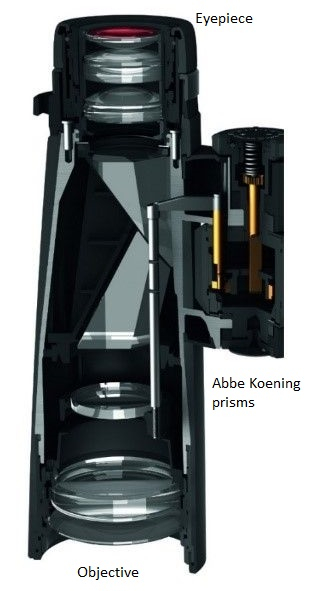
Binoculars with Abbe Koenig Prisms
Binoculars with individual focusing
This system is only found on Porro binoculars. These binoculars are perfectly sealed against the ingress of water. Focusing is only set once in good light conditions and then we can leave it since it works well in all conditions.
They are a good solution for low light use because with a central focus you usually get confused in the dark, you do not know if it's sharp enough or not because you do not see well in the dark.
The big disadvantage is that the close focusing distance is very long (from 15 to 20 m onwards).
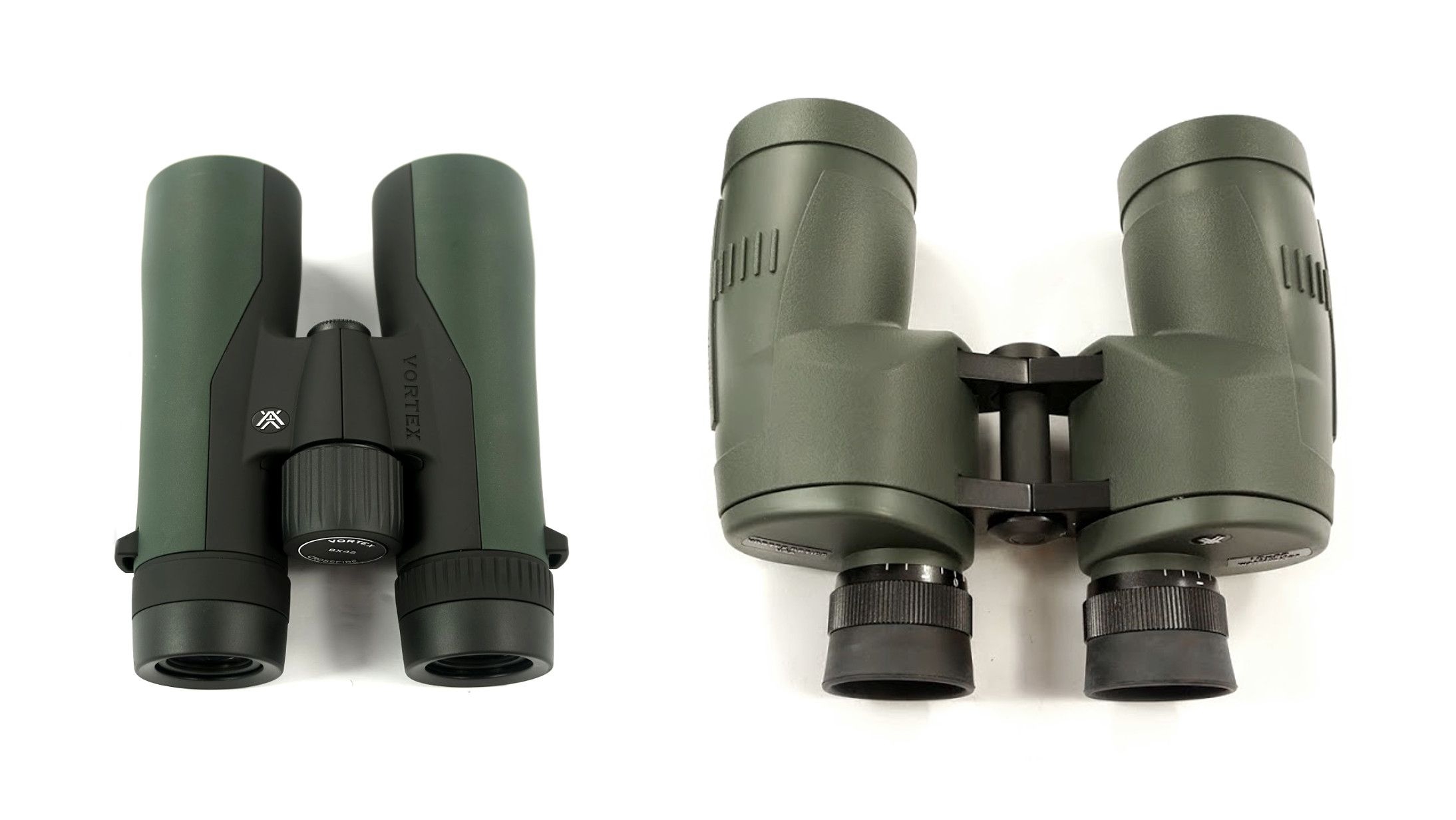
Binoculars with central focusing (left) and binoculars with individual focusing (right)
Source: Optics Trade
Best Compact Low-Light Binoculars
There is no such thing as compact Low Light Binoculars - but some are smaller. The only ones who have succeeded in making slightly smaller low-light binoculars are Zeiss and Swarovski.
Best Zeiss Compact Binos
- Zeiss offers a combination of special HT glass, Abbe Koenig prism and finishing T * coatings (8x54, which is about 20% smaller and lighter than the classic 8x56 binoculars with the same brightness, some also say it is the brightest pair of binoculars in the world).
Best Swarovski Compact Binos
- Swarovski Habicht 7x42 has a Porro prism and is extremely lightweight and useful for hunting in the dark.
Difference between Low Light binoculars and NV Optics
As mentioned before, Low Light Binoculars perform great at dusk or dawn, but seeing in complete darkness is an entirely different thing. Compare to low-light binoculars seeing with NV Optics on a pitch-dark night is much better. However, NV Optics is not the best choice when there is some light (dusk or dawn). Too much light can cause some real damage to the cathode (image intensifying tube), which means that NV Optics can not be used in the day time.
Besides the fact that Low Light Binoculars can be used at the daylight, the resolution and image details are also much better. The image quality and sharpness are notably worse when it comes to the NV Optics (mainly Digital), and magnification is also lower as with low-light binoculars. In essence, this is also one of the reasons why image details are better seen with low-light binoculars.
Another useful feature of binoculars is that they can be adjusted to different light levels, but the downside is that they are more prominent and much more massive than NV Optics.
Importance of lens coating
Optical devices have a lot of glass surfaces in their optical construction. If the manufacturers weren't using special coatings on the glass surfaces, a lot of light would be lost when traveling through the optical device. Zeiss was the first company to realize that coatings on the glass surface help minimize the loss of light.
Before the use of coatings, the light loss was around 30-50%. With added coatings, the decline was only about 20%. Another useful feature of applying coatings to the lens is the absence of the flash.
The application of different coatings on the glass surface has a very beneficial effect on the light transmission rate and helps to improve the optical performance of the device.
Different ways of applying the lens coatings:
-
Coated: some lens surfaces are coated with one anti-reflective layer of material (usually metal or similar)
-
Fully coated: all the surfaces on all lenses in the optical device are coated with one layer of material
-
Multi-coated: some lens surfaces are coated in multiple layers
-
Fully multi-coated: all glass surfaces are coated in multiple layers
Today the most famous and popular lens coatings are T*Coating from Zeiss and Diamond coating from Steiner. T*Coating eliminates the effect of stray light, while Diamond coating delivers the best clarity and contrast.
Low Light performance and quality of Range Finding Binoculars
In general, the rangefinding technology lowers the light transmission of binoculars. This means that for proper use in low light conditions, the objective lens diameter has to be around 56mm. Only the best rangefinding binoculars with excellent optical performance do not have a problem with light transmission rate, while binoculars of lower quality suffer from it.
Best Rangefinding Binoculars for use in Low Light conditions
Best Low Light Binoculars for hunting
The best low light binoculars are made by
- Zeiss,
- Steiner,
- Swarovski, and
- Fujinon.
Best Zeiss Low Light Binoculars
- Zeiss Victory HT series features Abbe Koenig prisms and special HT glass, which was made especially for observing when light conditions are not ideal.
Best Steiner Low Light Binoculars
- Nighthunter series from Steiner is famous for its usability in low light conditions, and fully-multi coated glass. The series features Porro prisms, which perform great in low light. Porro prisms also offer a focusing system separated for both eyes.
Best Swarovski Low Light Binoculars
- SLC binoculars are the first and only binoculars from Swarovski that features Abbe-Koenig prisms. Thanks to the fully-multi coatings on all lenses, the image is razor-sharp and free of any distortions.
- Another great low light pair of low-light binoculars from Swarovski are Habicht 7x42 GA. Binoculars with Porro prism provides incredibly bright, colorful, and sharp images. It comes with green rubber armor for protection against corrosion and abrasions.
Best Fujinon Low Light Binoculars
- The last on the list of best low light binoculars is Fujinon 7x50. Like Nighthunter binoculars, Fujinon features Porro prisms and individual focusing system. It provides focusing on each eye separately, which is a significant advantage since you can set it only once. Once the system is set, the eyes focus on different distances by themselves.
A short presentation of Low Light Binoculars is available here.
Videos and Slideshare Presentation of Low Light Binoculars
Video presentation of Low Light Binoculars
Slideshare Presentation of Low Light Binoculars
Filters
Sort
Filters
Sort
